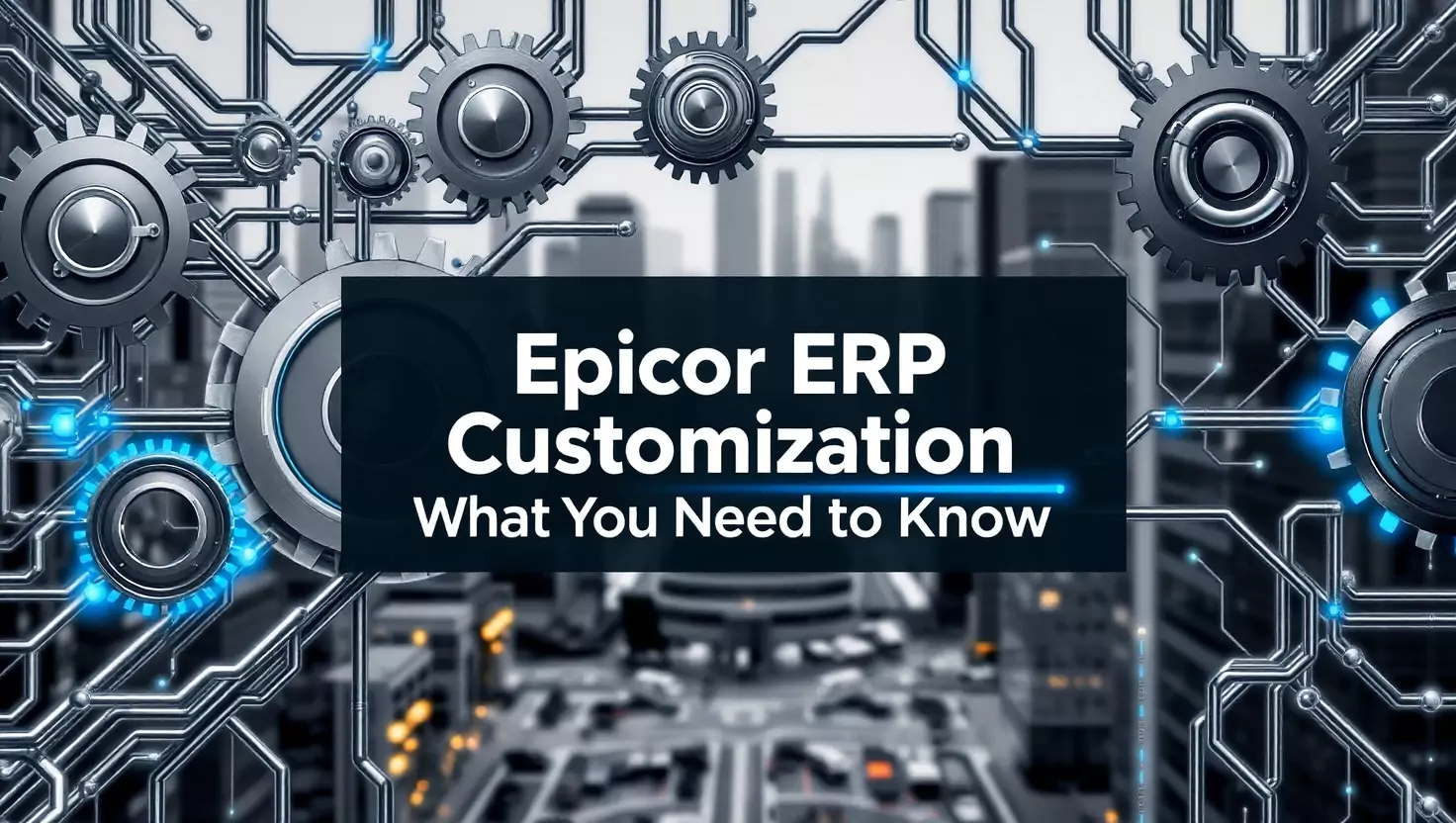Epicor ERP Customization: What You Really Need to Know
So, you’re eyeing Epicor ERP and wondering: can it actually bend to your business, or are you gonna get boxed in like usual? Good news—it’s one of those rare systems that’s built to be shaped by you, not the other way around. Forget one-size-fits-nobody. Epicor’s customization tools are the real deal, whether you’re just tweaking screens or building wild backend magic.
Here’s the lowdown on how Epicor ERP customization works, what’s on the table in 2025, and the key stuff you should chew over before getting all “custom” with your ERP setup.
What Is Epicor ERP Customization?
Let’s keep it real: customization is about making Epicor your own. It’s not just flipping settings or moving a few boxes around. We’re talking:
- New forms that actually fit your process
- Tweaked business logic that matches your rules
- Custom workflows and dashboards
- Full-on integrations with other apps
Epicor gives you a spectrum. Whether you’re a “drag-and-drop” type or a “show me the SDK” developer, there’s an option.
Types of Customization in Epicor ERP
Epicor’s got a spread of customization options—pick your poison based on tech chops and business needs.
1. User Interface (UI) Customization
If the default screens make your eyes roll, you’re not alone. Here’s what you can do:
- Rearrange screen elements to make sense for each department
- Add or remove fields (get rid of the clutter, please)
- Build custom dashboards for real, at-a-glance data
- Personalize home pages so users don’t land on useless stuff
2. Business Process Management (BPM) Workflows
Epicor’s built-in BPM tools help you automate and tweak business rules, because who’s got time for manual approvals?
Examples:
- Auto-approve purchase orders over a certain threshold—no more bottlenecks
- Send instant alerts when stock dips too low (so you don’t miss another order)
- Validate data entry before saving—prevent garbage-in, garbage-out
3. Application Studio (Low-Code Tool)
For those who don’t wanna drown in code:
- Create custom forms with drag-and-drop ease
- Build workflow automations without writing a novel
- Insert logic with just a sprinkle of scripting
- Deploy updates without sending your users into panic mode
Pro tip: This is gold for functional teams who want control without bugging IT 24/7.
4. RESTful API and Integrations
Need Epicor to vibe with your other systems? APIs have your back:
- Connect to CRM platforms (Salesforce, HubSpot, you name it)
- Plug into eCommerce sites (Shopify, Magento, etc.)
- Integrate with 3PL and logistics systems
- Hook up your custom mobile apps or web portals
5. Advanced Customization via SDK
This is where the hardcore stuff happens. If you’ve got developers itching for a challenge:
- Build custom modules or brand-new screens
- Extend backend logic as deep as you want
- Integrate tightly with third-party systems—think “next-level” stuff
Pros and Cons of Customizing Epicor ERP
Customization can be a game-changer, but it’s not all rainbows. Let’s break it down.
Benefits
- Tailored Workflows: Epicor fits your process, not the other way around
- Automation: Cut out repetitive, boring tasks
- Efficiency Boost: Users actually like using the system (imagine!)
- Competitive Differentiation: Do things your way—set yourself apart
- Less Manual Work: Goodbye, spreadsheet gymnastics
Potential Challenges
- Higher Costs: More time, more money—simple math
- Complexity: More moving parts = more things to keep track of
- Upgrade Headaches: Custom stuff can break during updates
- Skill Requirement: Need folks who know their stuff, or you’re sunk
- Data Issues: Poorly managed tweaks can mess up your data—yikes
⚠️ Heads up: Always ask—could configuration or a process tweak be enough? Don’t overcomplicate unless you gotta.
Epicor Customization Tools in 2025
Here’s what’s in the toolbox:
| Tool/Feature | What It Does | Skill Level |
|---|---|---|
| Application Studio | Drag-and-drop UI, forms | Beginner–Intermediate |
| BPM Designer | Workflow automation, validation rules | Intermediate |
| Epicor Functions | Reusable logic blocks (like stored procs) | Intermediate |
| REST API | Integrate with external apps/systems | Intermediate–Advanced |
| SDK | Deep backend customization | Advanced (Dev) |
| BAQ | Custom reports and dashboards | Beginner–Intermediate |
Best Practices for Customizing Epicor ERP
1. Start With a Business Needs Assessment
- Figure out what really needs customizing.
- Don’t just tweak for the sake of it.
2. Use Low-Code Tools First
- Application Studio and BPM are your friends.
- Lightweight, less painful to maintain.
3. Document Everything
- Seriously, future-you will be grateful.
- Clear docs mean easier upgrades and less head-scratching later.
4. Test Like Crazy
- Use Epicor’s sandbox for safe experimentation.
- Never roll out untested changes in production (unless you like drama).
5. Bring in the Pros
- No shame in calling certified Epicor consultants.
- They know the pitfalls and shortcuts—and probably save you cash in the long run.
When to Customize vs. When to Configure
Not every problem needs code. Sometimes, a quick configuration does the trick.
| Scenario | What to Do |
|---|---|
| Change field names/views/layouts | ✅ Configure |
| Build a new approval workflow | ✅ Configure (BPM) |
| Create new business logic for pricing | 🔧 Customize (BPM/SDK) |
| Integrate with third-party WMS | 🔧 Customize (API) |
| Add barcode scanning to warehouse flow | 🔧 Customize (REST/API) |
Epicor ERP Customization & Upgrades
One last thing—customizations and upgrades can clash. If you go wild with custom code, every upgrade can turn into a mini-nightmare. Document, test, and keep things modular so you’re not stuck in upgrade purgatory.
Bottom line: Epicor ERP is crazy flexible, but don’t customize just because you can. Be smart about it, keep it tidy, and you’ll get a system that feels like it was built just for you—without the horror stories.
